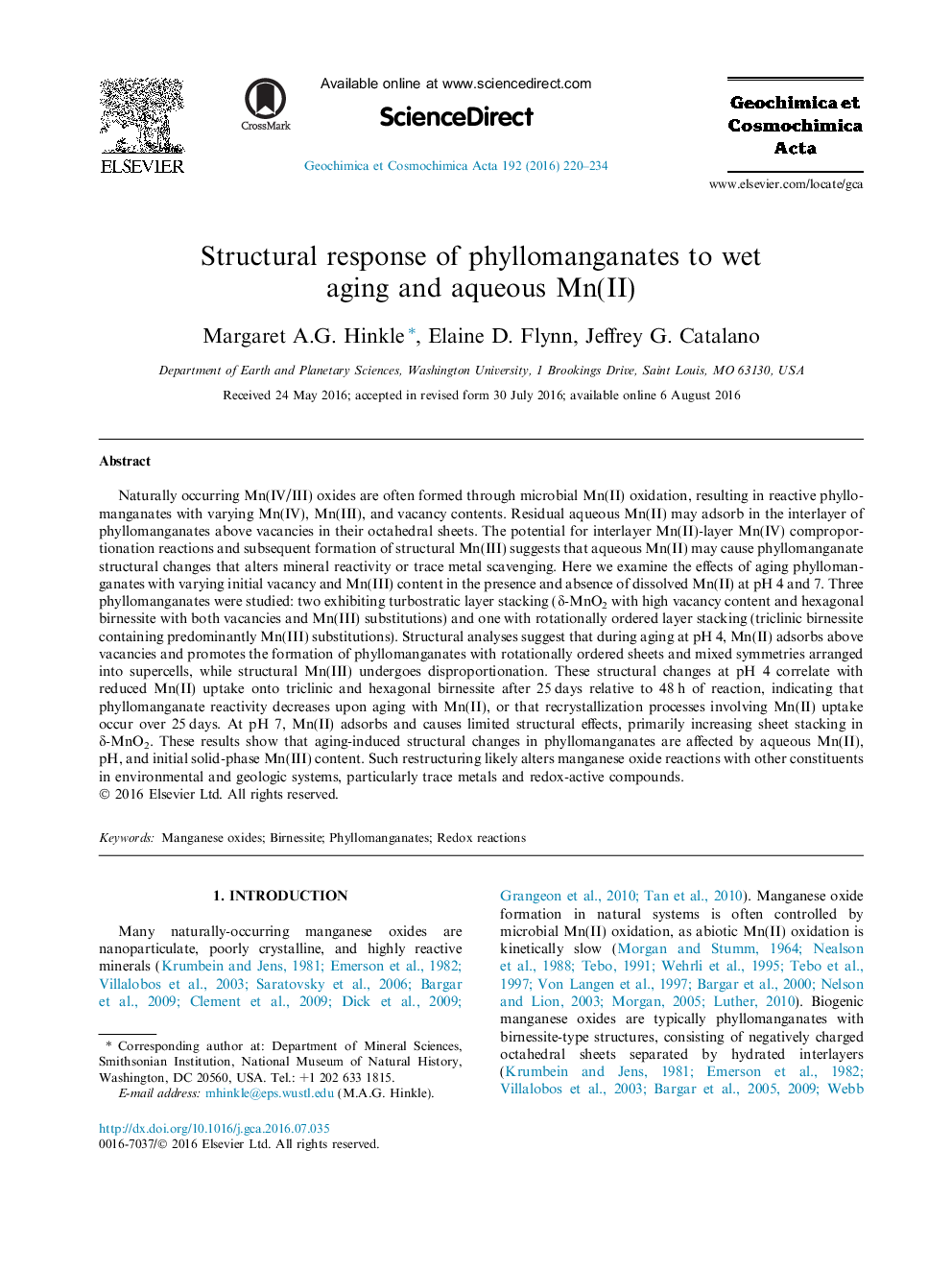| Article ID | Journal | Published Year | Pages | File Type |
|---|---|---|---|---|
| 4701729 | Geochimica et Cosmochimica Acta | 2016 | 15 Pages |
Naturally occurring Mn(IV/III) oxides are often formed through microbial Mn(II) oxidation, resulting in reactive phyllomanganates with varying Mn(IV), Mn(III), and vacancy contents. Residual aqueous Mn(II) may adsorb in the interlayer of phyllomanganates above vacancies in their octahedral sheets. The potential for interlayer Mn(II)-layer Mn(IV) comproportionation reactions and subsequent formation of structural Mn(III) suggests that aqueous Mn(II) may cause phyllomanganate structural changes that alters mineral reactivity or trace metal scavenging. Here we examine the effects of aging phyllomanganates with varying initial vacancy and Mn(III) content in the presence and absence of dissolved Mn(II) at pH 4 and 7. Three phyllomanganates were studied: two exhibiting turbostratic layer stacking (δ-MnO2 with high vacancy content and hexagonal birnessite with both vacancies and Mn(III) substitutions) and one with rotationally ordered layer stacking (triclinic birnessite containing predominantly Mn(III) substitutions). Structural analyses suggest that during aging at pH 4, Mn(II) adsorbs above vacancies and promotes the formation of phyllomanganates with rotationally ordered sheets and mixed symmetries arranged into supercells, while structural Mn(III) undergoes disproportionation. These structural changes at pH 4 correlate with reduced Mn(II) uptake onto triclinic and hexagonal birnessite after 25 days relative to 48 h of reaction, indicating that phyllomanganate reactivity decreases upon aging with Mn(II), or that recrystallization processes involving Mn(II) uptake occur over 25 days. At pH 7, Mn(II) adsorbs and causes limited structural effects, primarily increasing sheet stacking in δ-MnO2. These results show that aging-induced structural changes in phyllomanganates are affected by aqueous Mn(II), pH, and initial solid-phase Mn(III) content. Such restructuring likely alters manganese oxide reactions with other constituents in environmental and geologic systems, particularly trace metals and redox-active compounds.
